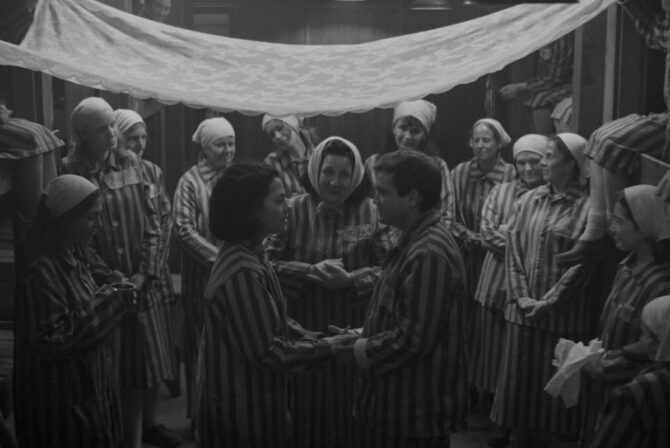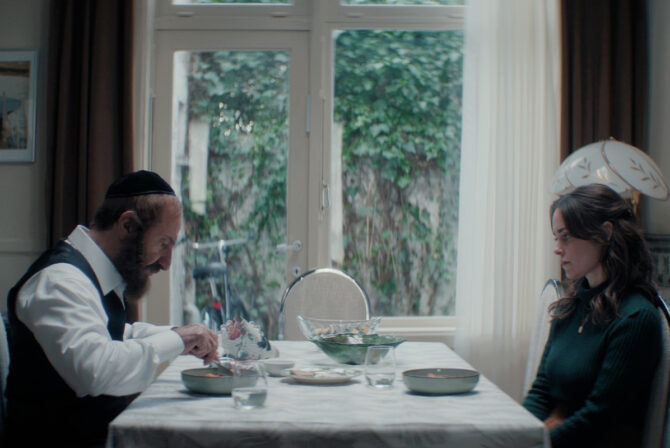There are two pinks.
You know about the first pink: that thin line that rises off the plastic window, showcased in a thousand TV shows, movies, books. It’s the spark that sets off fireworks of joy and expectation. The pink of new life.
I knew mine was coming even as the pee-drenched sticks remained stubbornly clear. Blue veins were lacing my breasts–full, fat breasts that were hot to the touch, the areoles spreading mauve skirts around my nipples.
Then, finally, it was there. Just there. A decade of wanting, two weeks of trying, two weeks of waiting, shoving my body in my husband’s face–look, look, isn’t that different? Isn’t that a change? Finally, a pink stripe of confirmation: pregnant.
The Second Pink
More than 5,300,000 women in the United States will see that same pink this year.
About 1,300,000 of them will see the second pink. Like I did.
It was a soft, pale blush, blossoming across the white cotton I held in my hand. Watery blood staining the toilet paper until it was the color of a little girl’s baby blanket.
Five days later, 34 weeks early, my baby came. It was the consistency, shape, and color of a dead slug, sticky in my vagina as I walked, falling out into a pad I wore to catch the red red blood that heralded its arrival.
It was not a surprise. Again, my body told me before any proof could confirm. On Thanksgiving morning, a few days before I saw the blood, I woke up at four am to pick up my husband from the airport, returning from a business trip. I was struck with a pain in my belly that lasted from New Jersey to JFK airport. I kept one hand on the wheel, one hand on my stomach, and tried to take deep breaths as I navigated the dark streets of Manhattan. The pain made me nauseous and I tried to believe that was a good sign, but I knew it wasn’t.
“I don’t feel pregnant anymore,” I told my husband, as we drove upstate later that day. He gathered me to his side. “I’m sure it will be ok,” he said. I didn’t let him see the certain tears that slipped down my face. My body felt hollow. My breasts felt dead.
Then I saw the second pink on the toilet paper. A few hours after that, when I went to pee, the toilet water turned pink, and a handful of bloody rosettes sunk to the bottom of the bowl.
The Confirmation
The next Friday I had my seven-week ultrasound, when we were supposed to see the heartbeat for the first time. My doctor directed my husband to stand behind me, so he could also see the sonogram screen.
“Why, you really want to see a dead baby?” I asked, in an awful attempt to be joking and uncaring. “Oh, don’t say that,” the doctor shushed me. “You’d be surprised, sometimes there is all this bleeding, and we still find a heartbeat.”
I knew about those surprises. I had spent hours sifting through websites that dangled stories of surprise salvation, women who had bled, women who had lost their symptoms, but who still were pregnant, who still had healthy babies.
The doctor inserted the sonogram device into my vagina and looked at the white lines on the black screen. “Nothing,” he said briskly, as if he hadn’t just promised me hope a moment before.
Who do you tell when you have a miscarriage? Can you eulogize a dead embryo on your Facebook status? Do I call a mother I barely speak to, who didn’t even know I was pregnant, to tell her I am not?
“I’m so sorry,” friends murmured. “Hugs,” they wrote.
Hugs? Sorry? I appreciated their sympathy, but those were not words that could stem the rage that boiled my blood, the hormonal surges that swamped me in anguish, screaming, heaving sobs at two o’clock in the morning. There were no words to hold me as I lay, numb, in bed, my limbs long and dead, my jaw plastic as a doll’s, my eyes frozen on the ceiling, tears falling down my cheeks.
And this, this trauma, is something that hits most women? Nobody told me that. Nobody told me, in the story of sperm, egg, embryo, belly, labor, baby, that there could be an abrupt detour to death. Who the hell is keeping this secret? And why? Is it even possible that this small death visits thousands of homes every normal, sunshining, blue sky, American day?
It isn’t possible. There was nobody who was feeling what I felt, as I screamed at my helpless husband with such rage, such impotent fury, throwing my wedding ring at his chest, grabbing my bag and slamming the apartment door so my anger echoed down the hall. Where could I go? There is nowhere to go when another innocence is destroyed. When your toughness and hope is revealed to be just a costume for a foolish idiot.
Seeking Consolance
We went to Friday night services at our synagogue. “All mourners please stand for the Kaddish,” the Rabbi called out.
A miscarriage doesn’t qualify as a death in Jewish law, so a woman doesn’t say the Kaddish, the mourning prayer, for a dead embryo. But my synagogue adheres more to the heart than the law, so for the first time in my life, I stood.
“Glorified and sanctified be God’s great name throughout the world which He has created according to His will.”
There is no mention of death in the Kaddish. Even in this mourners’ prayer, there was no room to say the words I wanted to say about the end of life, about the process of discharging a being from my body. Instead there were lines about God and His greatness.
The Rabbi pulled his prayer shawl over his shoulders, ebony lines flying over ivory cloth. The dark ink of the evening prayers blurred on the pale page.
All black and white. Life or death. No room for the gentle pastel promises of pink.
For another mother’s take on coping with miscarriage, read here.







